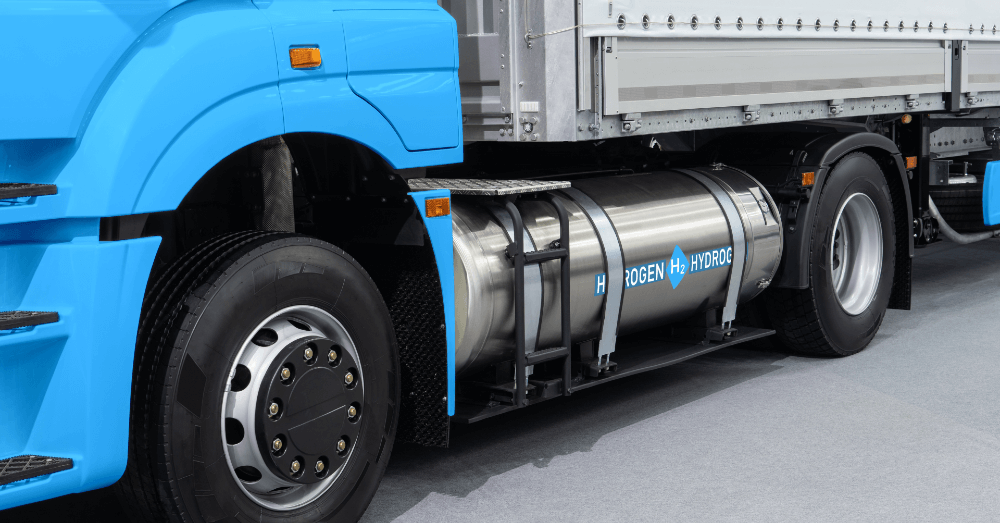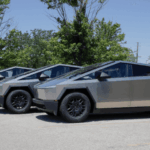In a world working to embrace electric vehicles, can another alternative fuel take over the market? Let’s explore hydrogen fuel cell vehicles.
If the first thing that comes to mind when considering hydrogen fuel cell vehicles (FCEVs) is the Hindenburg, you’ve got to remember that disaster took place a long time ago. The date was May 6, 1937, Germany was held by the Nazi party, America was in the Great Depression, and World War II hadn’t begun. Over the years, some automakers have researched the use of hydrogen in vehicles and have found some incredible positives that could come from using liquid hydrogen as a fuel source.
Why would hydrogen be a good fuel source?
Hydrogen is one of the most abundant and easily renewable elements in the entire world. We drink water, which is hydrogen mixed with oxygen, and our atmosphere is filled with the stuff. In fact, the universe has so much hydrogen in it that this element contributes to 75% of the mass of the universe. There are vast numbers of hydrogen atoms in water, plants, animals, and people. It’s abundant enough and easily renewable, which makes it a great source of fuel, if it can power vehicles.
What Is a Hydrogen Fuel Cell Powertrain
Hybrid powertrains are alternatives to traditional gas and diesel powertrains but aren’t nearly as environmentally friendly as electric vehicles because they still require a gas-powered engine to be present. Hydrogen fuel cell vehicles could be the perfect alternative to hybrids, EVs, and gas-powered vehicles. Hydrogen-powered vehicles utilize liquid hydrogen for fuel, and that fuel is combined with oxygen to produce electricity. The electricity powers the electric motors at the wheels, and the vehicle only expels water vapor.
Hydrogen fuel cell vehicles are technically series hybrid vehicles, which means they are sometimes classified as hybrids. The expelling of water vapor is clean for the environment and atmosphere, but that doesn’t stop these vehicles from having pros and cons.
Pros
- Zero tailpipe emissions
- Fast refueling, similar to gas vehicles
- Minimal maintenance required
Cons
- Extremely limited infrastructure to support hydrogen-powered vehicles
- Transportation and storage of liquid hydrogen is more energy and labor-intensive than gasoline and diesel
- Fuel cells are expensive to replace
The chicken and egg scenario; a serious roadblock for hydrogen
Currently, there are only about 17,000 hydrogen fuel cell vehicles on the road, and they are all on the west coast, mostly in California. The lack of liquid hydrogen refueling stations makes it extremely difficult to get these vehicles to become widespread options for many drivers. That said, if some drivers realized the fast refueling times, which is similar to gas vehicles, they might be more willing to use an FCEV. This is one of the greatest advantages of hydrogen over electricity to power vehicles.
Why was proof of concept easier for EVs?
The early days of modern EVs, not the models that came before gas-powered cars, couldn’t drive very far on a full charge, but these early EVs could be plugged into a regular 120-volt at-home outlet and recharge overnight. This meant that every home in America, and the world actually, could be used as a charging port for these early EVs. Unfortunately, our homes don’t run on liquid hydrogen, which makes it much more difficult to prove that FCEVs could be the future of driving.
Should the trucking industry look into FCEV powertrains
Like any other new technology, hydrogen-powered vehicles will likely be much more expensive than traditional models. If we wanted to see one of the best uses of hydrogen as a fuel that could keep the vehicle going for longer, that would be in the trucking industry. The greatest challenge to electric vehicles is the reduced driving range while towing a heavy load. If the tanks can be refilled with liquid hydrogen in as little time as it takes to refill with diesel, semi-trucks could expel water vapor into the atmosphere instead of emissions from the massive diesel-powered engines.
Safety concerns; the Hindenburg scenario
The concern over hydrogen fuel cell vehicles exploding like the Hindenburg should be gone from our minds. FCEVs are considered as safe as any other car. The high-pressure tanks are designed to survive high-speed crashes without leaking or breaching. Think of it this way: when the Hindenburg blew up, cars didn’t have seatbelts; now, we have several safety systems to help us survive in a crash.
Can hydrogen fuel cell vehicles become the next alternative fuel vehicles to hit the market in large numbers? This will only happen if a supportive infrastructure is created.







Leave a Reply